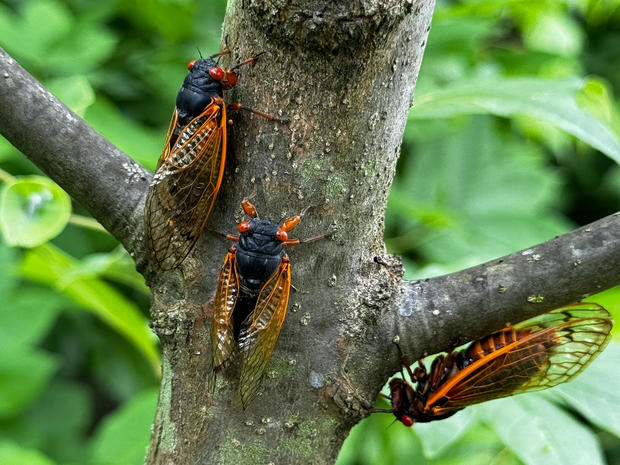Cicadas are back, but climate change is messing with their body clocks
Billions of cicadas are emerging across about 16 states in the Southeast and Midwest. Periodical cicadas used to reliably emerge every 13 or 17 years, depending on their brood. But in a warming world where spring conditions arrive sooner, climate change is messing with the bugs' internal alarm clocks.
Scientists believe that cicadas count years through the change in fluid flow in tree roots, and when their year to emerge arrives, they stay underground until the soil temperature reaches 64 degrees Fahrenheit. Spring-like conditions now occur earlier, with the season warming 2 degrees Fahrenheit across the U.S. since 1970, according to Climate Central, a nonprofit researching climate change.
Spring arriving sooner means so are the cicadas. Last month, the cicadas' return started in Georgia nearly two weeks ahead of schedule before spreading north as far as the suburbs of Chicago. The Southwest has experienced the most spring warming, with locations in Nevada, Texas, and Arizona exceeding 6 degrees Fahrenheit of spring warming since 1970, according to Climate Central.
"In 2021, they emerged 11 days — almost two weeks — earlier," said biologist Gene Kritsky, who has been studying cicadas for decades. "This is true for Baltimore, for Washington, for Philadelphia, for Indianapolis."
Cicada watchers used to be able to predict their emergence as easily as astronomers could predict the recent solar eclipse. But that has become more challenging as the cicadas' patterns are changing as warm spring days happen more often.
In 2007, a midwinter warm spell in Ohio caused trees to prematurely start growing leaves, making the cicadas think an entire year had passed. Kritsky said this tricked them into counting the years wrong and, when true spring arrived months later, they emerged a year ahead of schedule.
"They had two fluid flows, so for them, it was 17 years," said Kritsky. "They didn't detect that there were only a few weeks between. They just detected that the fluid stopped and then started up again," said Kritsky.
Once they do make it back out to the world, they live for just a few weeks with one goal in mind: to make sure the species survives.
"They come up in massive numbers to overwhelm their predators. So the predators can eat every cicada they want, and there's still millions left to reproduce," said Kritsky.






